Made Del’s Hawaiian Sweet Bread today using Monk Fruit No Calorie Sweetener for baked goods. I decided to give the Monk Fruit a try since it worked so well with the Bran Muffins and Banana Bread. It was a complete flop! I think the bran muffins baked up so sweet and well because baking soda and baking powder was used instead of commercial yeast or sourdough. The Hawaiian Bread used commercial yeast.
I ran a comparative test to prove the theory. The procedure is outlined HERE. Both glasses were identical with the exception of 1 teaspoon sugar in one and 1 teaspoon Monk Fruit in the other.
NOTE - SAF Gold (osmotolerant yeast) was used for the test.
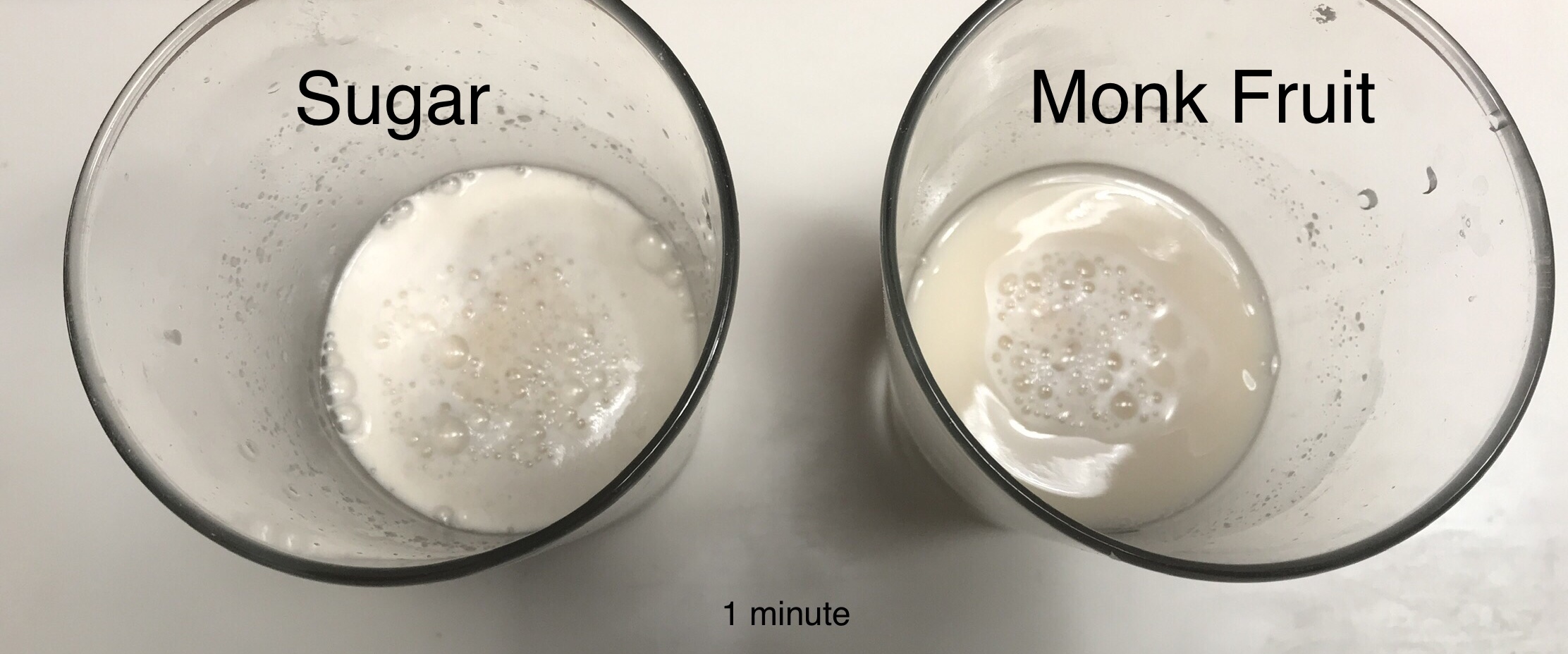
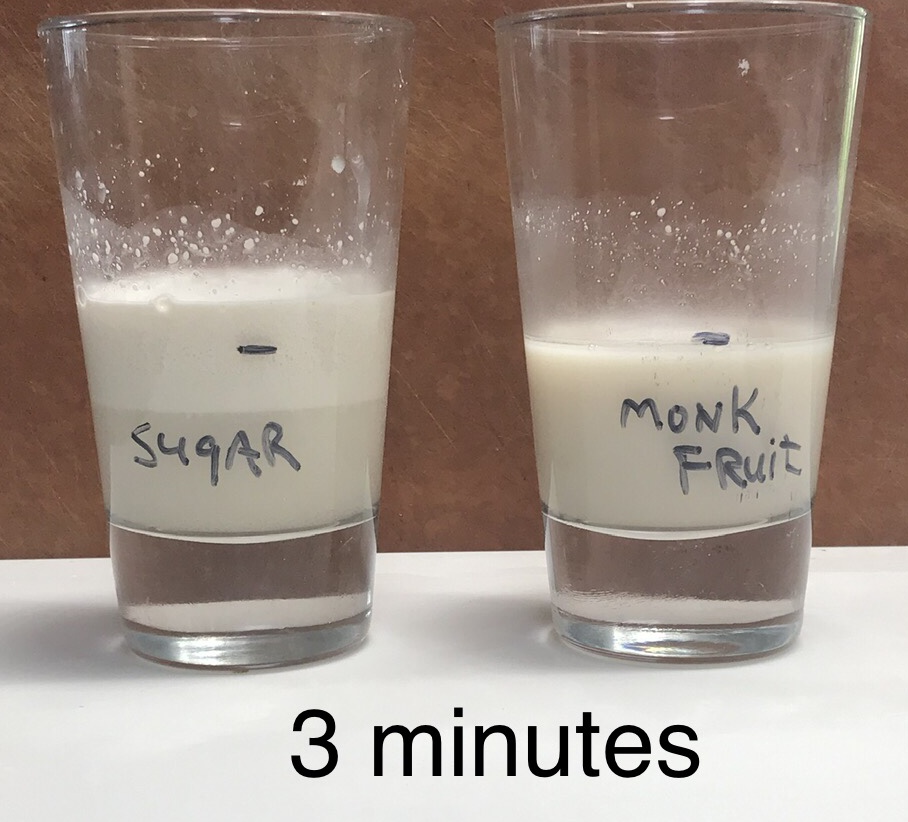
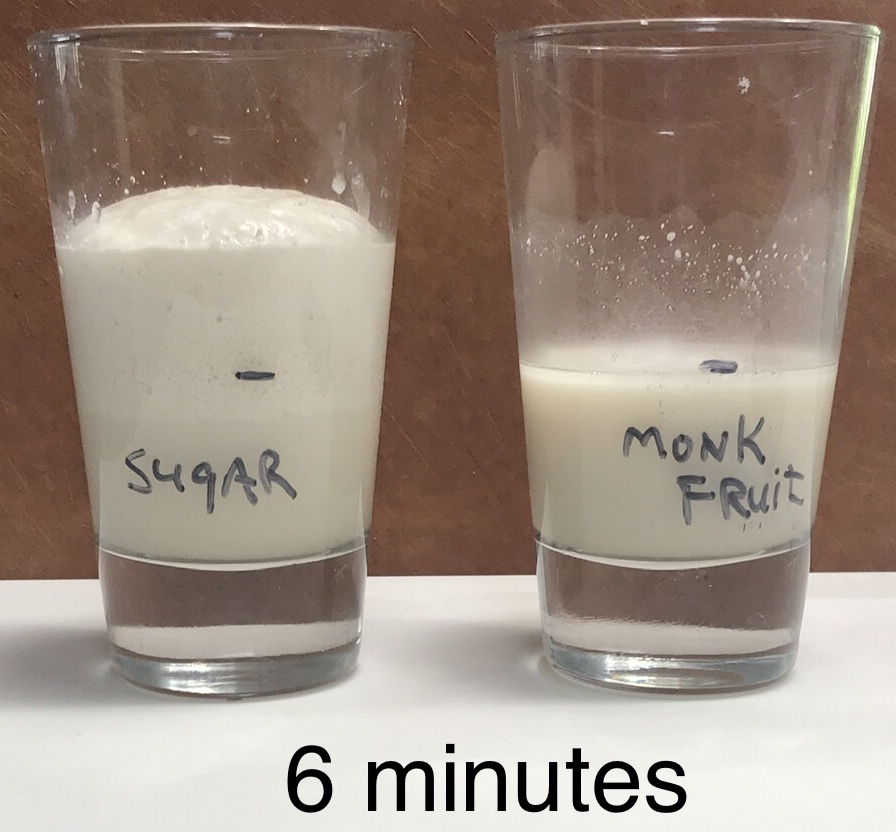
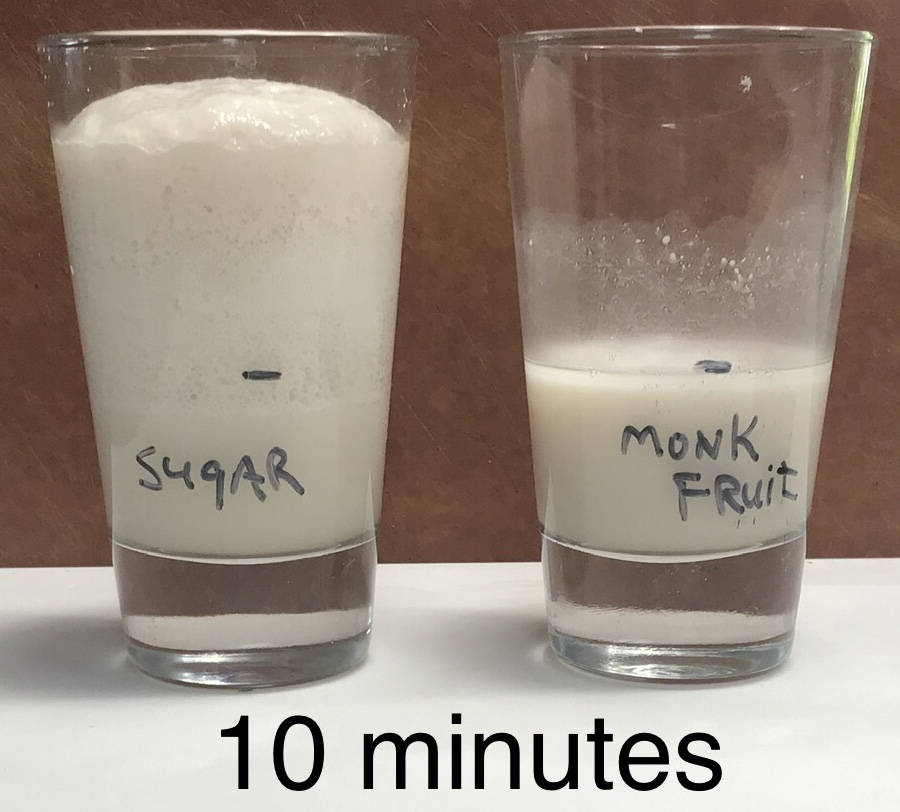
Now I KNOW why I got bricks.
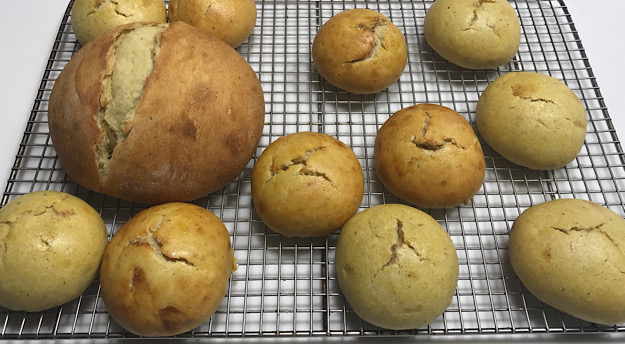
Bottom Line -
For those bakers that are calorie conscious, No Calorie Sweeteners are outstanding for muffins, Banana Breads, or anyother baked goods that rely on baking soda and baking powder, but awful for commercially yeasted breads.
Thanks for posting - it can be surprising what substitutes work for some purposes, but not others.
I'm trying to imagine the mechanism. The failure with only yeast, water and 0-calorie sweetener makes sense. The yeast has nothing to eat.
But I don't understand the failure in bread. The yeast should derive food from the flours. Shouldn't it? Bread doesn't need sugar.
Could the Monk fruit be toxic to the yeast?
You make a good point, Gary. I have no answer, but I can say that the Hawaiian Bread uses 2.2% CY. Inspite of that high amount it didn’t rise. I haven’t baked a brick in decades...
A thought -
Doesn’t CY rise if proofed in warm water even without sugar?
If I had any, I'd like to repeat your experiment with (say) 100% hydration flour/water + the sweetener.
gary, you can purchase the sweetener HERE.
Maybe the "sugar alcohol" is hurting the yeast?
That should work fine. The native amylase will start making maltose as soon as water hits flour, though not immediately at a rate that matches the yeast's capacity to consume maltose. My understanding is that the amylase as an enzyme is in fact just a catalyst and continues to cleave maltose off of starch macromolecules until it reaches the end of the molecule then starts on another one.
IDY is designed to be used without a proving step, so I suspect it just woke up, and starved before breakfast was served. Of course the longer you wait for it the deader it becomes. So no, CY does not rise if proofed in warm water even without sugar.
People need to realize there are always newbies seeking knowledge, and how frustrating it is to find some answers, that are totally obscured by acronyms. Is there a page decoding these for new people, or must I spend endless hours searching?
I was going to refer you to TFL's Baker's Handbook that was created some years ago. It includes a glossary that addresses some terms but could be expanded, since it doesn't cover all of the acronyms in this thread.
IDY, for instance, means instant dry yeast. ADY refers to active dry yeast. CY refers to commercial yeast but doesn't specify whether it is IDY or ADY.
Paul
P.S. You'll probably have better luck posting a specific question as a new topic, rather than inserting one in a thread that is several years old. More people are apt to see it.
A few Erythritol-based products, like this one, specifically warn it won't work with yeast. Looking forward to anyone else giving it a go. I've also dropped an online question to Splenda Inc. via their web site to see what they have to say.
I am in the process of mixing another identical batch without Monk Fruit and using sugar. Right now everything appears normal and I fully expect good bread from it.
The first batch, using Monk Fruit didn’t rise at all.
This bread calls for SAF GOLD, so it is osmotolerant.
What if using regular SAF?
SAF Gold is designed for sweet bread (sugar 10-30%). Other people have used it for regular bread without problem. However, I wonder whether that is an issue when used with erythritol.
This is how this particular dough rises when mixed with the requested sugar. Like a Rocket.
It is rising so aggressively that I decided to knead the dough down and BF one more time.
Interesting experiment Dan, I’m following with interest although I have to admit to not liking artificial sweeteners.
Benny
Lesson Learned
... according to the company's consumer information folks, "The yeast won’t feed off of Erythritol-based sweeteners. You will need to add a bit of sugar, honey, or something with natural sugars in order to feed the yeast."
what on earth are you doing with my treasured monk fruit? And why is it so white?
I know this as traditional medicine for loosening slime in the bronchial tubes and getting rid of dry coughs. I know the fruit is sweet. Is this white crytal monk fruit sugar a by-product? Normal boiled dried monk fruit is dark brown.
Great stuff by the way for nagging coughs or attacking that "frog" or tightness just as a cold starts to set in. I always have the dried fruit or tea "cubes" at home. In bread? Interesting. Why am I not surprised yeast doesn't like it?
I will look into this. “ I know this as traditional medicine for loosening slime in the bronchial tubes and getting rid of dry coughs.”
I image the medial Monk Fruit is in concentrated form.
It's white from the erythritol that the monk fruit extract is coated on. Pure erythritol is a white crystalline solid. It has an interesting cooling sensation on the tongue because of a positive heat of solution (endothermic). I find it does taste sweet, but not as sweet as sugar.
Slightly off-topic…
One interesting property about erythritol is that it has insecticidal properties against fruit flies. This was discovered by the son of a Drexel University researcher who used it as part of a middle-school science experiment. His dad then did more thorough research to confirm the results. His son is probably one of the few of his age to be published in a major scientific journal.
My chemistry curiosity was piqued by the possibility of erythritol inhibition of yeast. I set up the following experiment:
The solids were dissolved in 52 mL warm water and 0.4 g (1/8th tsp.) SAF Red instant yeast was added at ≈100 °F. The yeast was stirred to dissolve. The following images were taken at ≈20 minutes post-addition.
My observation is that the yeast becomes frothy in the presence of sugar and the sugar/erythritol mixture. No activity is observed in the erythritol solution.
Conclusion: Yeast activity does not appear to be inhibited by the presence of erythritol. Yeast does not show any activity with erythritol alone.
In my opinion, sugar is the best product for activating the yeast. And in general for any baking. I tried baking muffins with sweetener - the texture of the product turned out to be completely different, with no pleasure, no airiness.